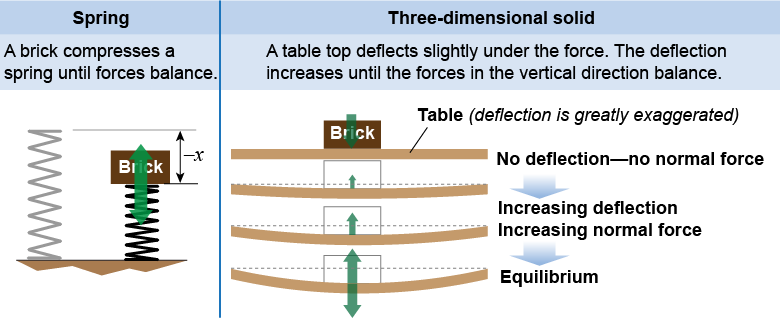|
A generalized version of Hooke’s law describes the deformation of three-dimensional solids. The elasticity of a material describes the material’s ability to bend or change shape without breaking. Rubber is very elastic and a rubber band can easily stretch 200% or more before breaking. On the opposite extreme, glass is not very elastic at all. Glass breaks before stretching even a few percent. Materials that break before stretching are called brittle and include glass, ceramic, and stone. Plastics and metals can fall in between the extremes of high elasticity and brittleness. 
|

|
When you place a brick on a table, the table exerts precisely the right normal force up on the brick to maintain equilibrium (zero net force). The table does not solve the problem of how much force to exert using free-body diagrams! Instead, the table behaves like a very stiff spring. All materials have some degree of elasticity and a very sensitive instrument would show that the table surface deflects a tiny amount under the weight of the brick. Hooke’s law applies and the force exerted on the brick increases as the deflection of the table increases. The table continues to deflect until equilibrium is reached, at which point the upward force from the table exactly balances the downward force from the weight of the brick. 
|

|
When you talk about the strength of an object, such as a beam, what you are really describing is the size of its “spring constant” k. The material strength for an object or material is its ability to sustain force without permanent deformation or breaking. A large k means a large force will cause very little deflection. For example, a structural engineer designing a building based on the International Building Code might specify that a floor deflect no more than 1/360 of its longest span when loaded at 700 N/m2. The engineer chooses the size of the beams using Hooke’s law! 
|
| |
|

